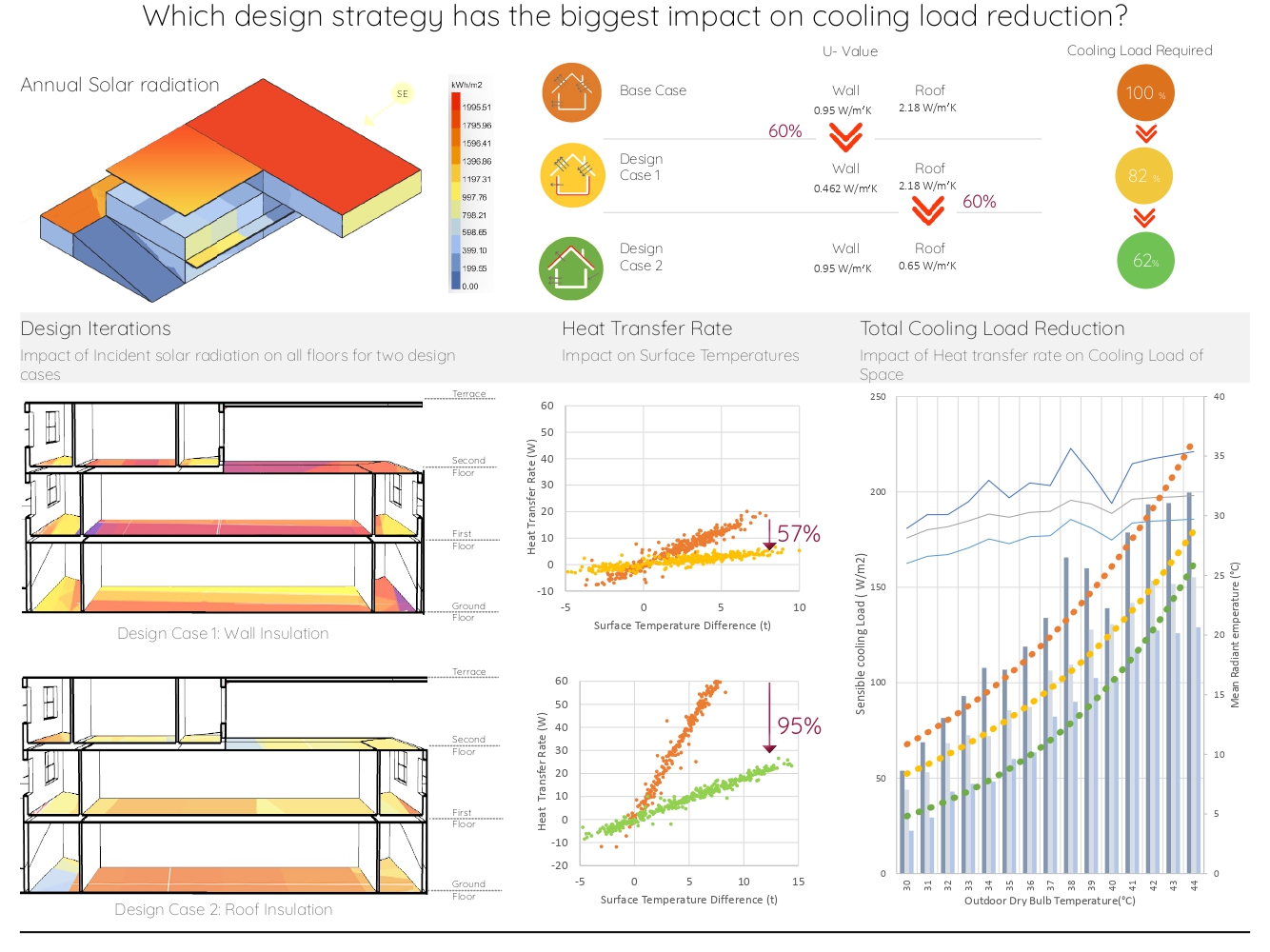What is the impact of insulation on Annual Heat loads of the Building?

Project Location:
Simulation Scale:
Application:
Audience:
What is this graphic showing? Describe the different parts of the graphic and how it communicates the data.
The above graphic demonstrates the impact of various building components towards the heat gain and thus increasing the total cooling load of the building. The significant impact can be observed by insulation on the roof as it is one of the major contributors of heat gain as compared to the heat gains from the walls. The graph portrays the importance of where the ECMs should be applied to make a significant difference in the heat gains and the cooling loads. Base Case represents the uninsulated building envelope and the impact of solar radiation and surface conduction on total cooling load. The parametric analysis is performed by changing the U value of two building components (Wall and Roof) and observing the corresponding change in the annual heat gain and thus the total cooling load of the building
What type of graphic is this?
- Diagram
Design Variables
- Insulation R-value
- Other
Is this part of the ASHRAE-209 cycle?
- Cycle 1 Simple Box Model
What tools were used for the simulation analysis?
- Design Builder
What tools did you use to create the graphic?
- Adobe Indesign
What was successful and/or unique about the graphic in how it communicates information?
The graphic represents the comparative analysis in the form of Architectural Visualization, which assists the designer in comprehending the intended data and enables the designer to make data-driven decisions. The colour Schemes in the graphics also allows the reader to connect and analyse the data easily
Is there anything else you would like to mention?
The heat gains are maximum from the roof due the solar Incident radiation, the azimuth angle for walls is 90° and for roof is 0 °. The solar altitude angle for summers is maximum and minimum in winters which affects the heat transfer rate by radiation on the walls while for roof it remains maximum throughout the year. Hence, Insulating the roof as it contributes maximum to the conduction and solar
